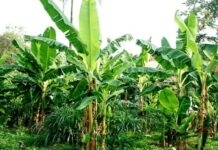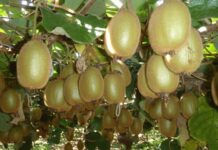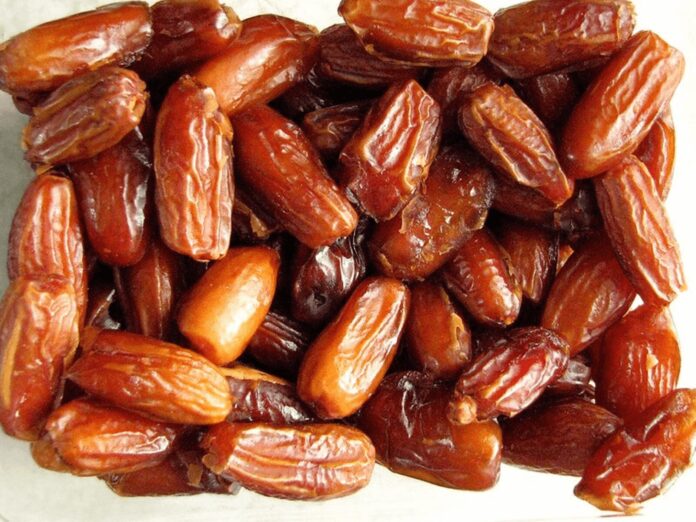
Now in your backyard, you can grow palm dates. In India, dates are growing day by day in slowly commercial cultivation. Dates are fruits of good nutrition and are an excellent source of sugar, calcium and nicotinic acid, iron, and potassium. Iran is the world’s number one date manufacturer and exporter.
Health Benefits of Dates
- It helps in relieving constipation & regulating bowel movements.
- Dates help in promoting heart health & reducing heart disease risk.
- Controlling diarrhea.
- Preventing Iron deficiency anemia
- Reducing blood pressure
- It promoting respiratory and digestive health
- Dates help in pregnancy and deliveries
- Reducing colitis risk
- Helps in weight gain
Climate Requirement for Dates Farming
For their best growth, dates require low relative humidity and plenty of sunshine. This takes long days with plenty of sunshine, temperatures at night and frost-free winter days. Especially during flowering and fruit set, it does not prefer rain.
Soil Requirement for Dates Farming
Dates require deep loam soils with PH 8.0 TO 10.0 well-drained. The soil should be capable of holding moisture. The dates can also be grown in lower yield saline or alkaline soils. For better root growth, the soil should be free of calcium carbonate and should have no hardpan at least up to 2.5 meters.
Propagation Requirement for Dates Farming
Propagation in date palm cultivation by off-shoots from the base of the palm tree of the parent. Farmers do not like the propagation of seed as it results in low fruit quality and more than half of these fruits may be male-free.
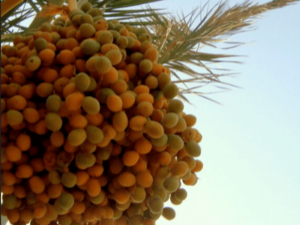
Before removing the suckers, the outer leaves of mother palm should be cut back to 2/3rd of their lengths & the inner leaves should be cut to half, the pruned old leaves stalks should be tied together for protecting and developing the well-rooted system of the young growing bud.
Land Preparation and Planting in Dates Farming
Since the date palm trees are perennial in nature and have a long life of approximately 50 years, sufficient spacing between the plants is important. In the dates palm cultivation, the square planting method is followed and a range of 8 meters between the rows is maintained for proper intercultural operations and development in this process. In the dates of farming, the plant density is around 160 plants per hectare of land, and 10 percent of these must be male off-shoots to provide sufficient pollen-grains as the dates are dioecious fruits.
The selected field should be plowed 2 to 3 times and leveled to take the soil to the fine tilth point. Build the length of the pit of 1 meter during the summer to prepare for rainy season planting. For about 2 weeks, these pits should be kept open and then lined with well-rotted manure and soil from the farmyard. The best time to plant is July to seven.
Intercropping in Dates Farming
Farmers can gain some extra income if the field has irrigation facilities by providing intercrops between the dates of palm plants. It is possible to grow intercrops such as green gram, black gram, beans, lentils, crops of tomatoes, papaya, and pomegranate. Ensure adequate water and fertilizers needed in the case of intercropping.
 Irrigation in Dates Farming
Irrigation in Dates Farming
Date palm requires high although water that it can endure prolonged dryness and drought. It prefers constant soil moisture but is prone to waterlog. There is no need for watering in the rainy season, and in the case of heavy rain irrigation floods, water must be drained out as it can harm the planting. In high water table areas, 5 to 6 irrigations may be needed annually where regular irrigation is required after planting. Water quality depends on the capability and climatic conditions of soil holding moisture. Mulching is the best way to keep soil moisture, so weed growth can be avoided. Once the off-shoots emerge, the irrigation rate may be decreased.
Fruit Thinning and Regulating Leaf Number in Dates Farming
Because of its dioecious nature, date palm trees are heavily pollinated. In commercial farming, hand pollination is usually carried out. For 100 female date palms, it takes 2 to 3 male trees. It is appropriate to insert around 3 strands of male flowers between strands of female flowers of date palm trees. Pollination in date palms is very important because pollen greatly influences the quality of dates, especially the size and time of fruit maturation.
Fruit thinning is important in the dates of farming and should be done by chemical sprays manually. Fruit thinning is required in the following year for adequate flowering and to improve the quality of the fruit date. This also helps to avoid premature fruit maturation.
For proper growth and fruit yield, a sufficient number of green leaves in date palms are necessary. Fewer leaves can lead to poor fruit quality. The number of leaves depends on the cultivated variety, e.g. the optimal number of leaves in barhee variety is 7 to 10 wherein Hallway as in 8 to 9. In the month of June, the old leaves should be pruned to allow new leaf growth.
Fertilizers in Dates Farming
For date palm cultivation, natural and organic fertilizers are very important for the production of quality dates. This also raises the dates yield. It is recommended that the soil be supplemented with well-decomposed farmyard manure of 12 to 35 tonnes, which can be applauded in early winter. Chemical N: P: K fertilizers should be applied in the 30:20:50 kg/ha ratio and may be applied in March and April. In India, the dosage of’ N’ IS 1.40 kg/tree is recommended. An adult tree needs 600 grams of’ N’ and 100 grams of’ P’ and’ K’ each year when it comes to annual requirements.
Pests and Diseases in Dates Farming
The following are the diseases and pests found date palm plantation.
Diplodia disease: In date cultivation, this is also caused by fungus. Secure wounds and cuts from Bordeaux mixture pruning to monitor this.
Khamedj disease: In neglected plantations, the fungus induced warm, humid climatic conditions. It is necessary to remove and burn infected spathes. Palms with diseased Bordeaux mixture should be treated.
Coconut rhinoceros beetle: This is also caused by insects and can be managed by cutting and burning down any rotting logs in palm plantation.
Harvesting
Between 6 to 7 years of planting, the dates will be prepared for harvesting and yield will be less in the initial stages. Dates are eaten at different stages depending on the variety, so harvesting depends on local demand. Date fruits are harvested at the’ Doka’ stage in India to prevent any damage caused by moisture and wind. In Gujarat state, Ethephon spray is recommended for advancing fruit maturity at color break time.

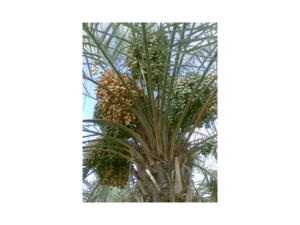 Irrigation in Dates Farming
Irrigation in Dates Farming
